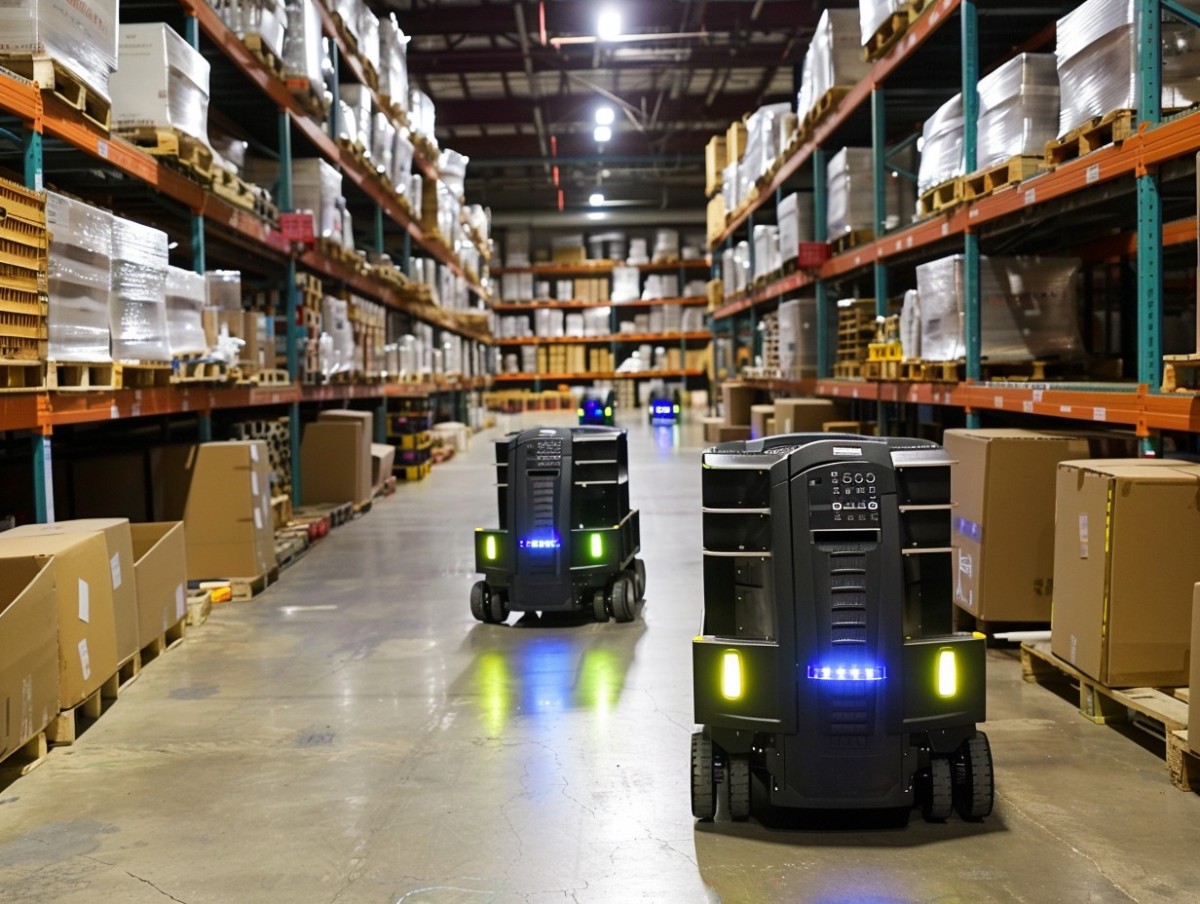MIT researchers have made a big leap in making warehouses work better and faster. Using AI, they’ve found a smart way to let hundreds of robots move around without bumping into each other, making the whole system more efficient. This is a big deal for industries like online shopping and car making, where getting things from point A to point B quickly is key.
The problem with warehouses
Imagine trying to manage 800 robots in a huge warehouse, all moving at once. It’s a tough job. These robots need to pick up items and get them ready for shipping without any crashes. It’s a puzzle that even the best computer programs find hard to solve because things move so fast.
The MIT team took what they know about easing city traffic and applied it to this problem. They created a deep-learning model that looks at the warehouse layout, robot paths, jobs, and obstacles. Then, it figures out the best spots to clear up traffic jams. The cool part is they split the robots into smaller groups. This way, they can sort out the traffic in each group more quickly using simpler methods. Their system cleared up robot traffic nearly four times faster than older methods.
Tech details
Cathy Wu, a big name in AI and engineering at MIT, and Zhongxia Yan, a top student, are behind this research. They designed a new neural network that can handle the complex dance of hundreds of robots. It can track their paths, starting points, endpoints, and how they relate to each other. This system works fast enough to keep up with the warehouse’s needs, cutting through the chaos.
In a warehouse, when an order comes in, a robot grabs the item and brings it to a worker to pack. With hundreds doing this at once, avoiding crashes is a must. The MIT approach uses machine learning to spot and ease the busiest spots quickly. By focusing on small robot groups, the network can predict where easing up will help the most. Then, it fixes those spots one by one.
Why it matters
Beyond making warehouses run smoother, this approach could help with other big planning tasks, like designing computer chips or laying out pipes in buildings. It’s a versatile tool that could change how we tackle complex problems.
The MIT team isn’t stopping here. They want to make their system even clearer and easier to use, moving from a complex AI decision-making process to simpler, rule-based solutions. This could make it easier to apply their findings in real warehouses and other settings.
Expert views
Andrea Lodi, a well-respected professor not involved in the study, praised the MIT work. He highlighted its innovative mix of technology that makes it stand out in solving space and time challenges without needing super specialized tweaks. The results are impressive, improving speed and quality of solutions and working well even in new situations.
MIT’s latest research could change how warehouses operate, making them faster and more efficient. This is just the beginning. The techniques developed here have the potential to solve a range of complex problems, marking a significant step forward in AI and logistics.





